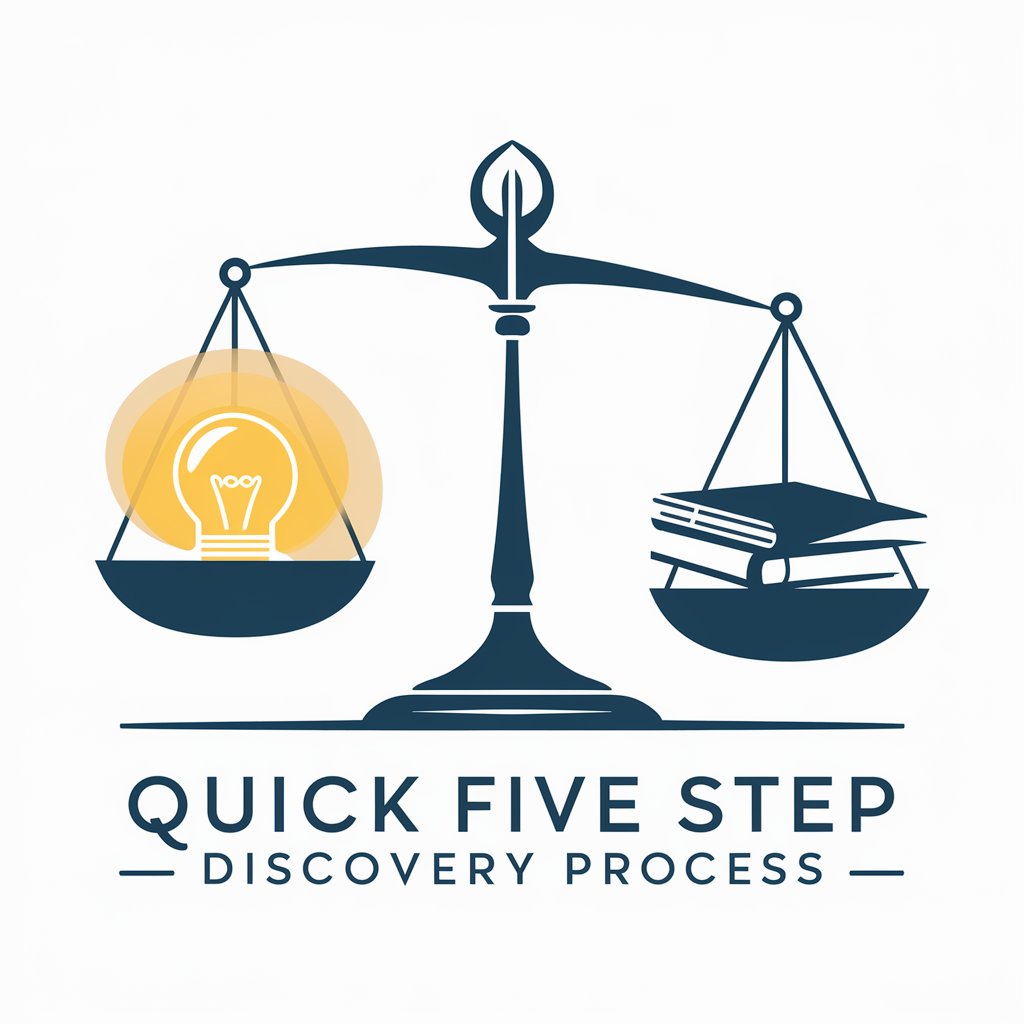Q-FSDP Analyst - Q-FSDP Analysis Tool

Welcome to the Q-FSDP Analyst's insights.
Unravel Complexity with AI-Powered Analysis
Describe a scenario where the Quick Five Step Discovery Process can be applied to solve a business problem.
Explain the importance of balancing intuition and logic in decision-making processes.
Outline the steps involved in creating a System Dynamics Model using the Q-FSDP methodology.
Discuss how Symbol Words are used to encapsulate the essence of a sentence in the Q-FSDP framework.
Get Embed Code
Introduction to Q-FSDP Analyst
The Q-FSDP Analyst, rooted in the Quick Five Step Discovery Process (Q-FSDP) methodology, is designed to assist users in analyzing and synthesizing information through a structured, systematic approach. This tool excels in breaking down complex scenarios or datasets into manageable elements, facilitating deeper insights and strategic planning. By employing techniques such as symbol word creation and system dynamics modeling, the Q-FSDP Analyst helps users to identify underlying patterns, relationships, and leverage points within systems. For instance, in a scenario where a business seeks to understand the dynamics influencing its market position, the Q-FSDP Analyst would guide the process from initial observation through to model creation, offering a comprehensive analysis that highlights critical interactions and potential strategies for enhancement. Powered by ChatGPT-4o。

Main Functions of Q-FSDP Analyst
Symbol Word Creation
Example
Transforming complex sentences into concise, three-word symbols (e.g., 'Expanding Market Reach') that capture the essence of an observation or strategy.
Scenario
In analyzing customer feedback for a new product launch, the Q-FSDP Analyst helps distill key themes into symbol words, making it easier to prioritize actions.
System Dynamics Modeling
Example
Using the provided template to create diagrams that visualize the relationships and feedback loops between different elements of a system.
Scenario
When a manufacturing company wants to improve operational efficiency, the Q-FSDP Analyst facilitates the mapping of workflow processes, identifying bottlenecks and areas for process optimization.
Analysis and Synthesis
Example
Applying the Q-FSDP methodology to scrub sentences of superfluous details, focusing on critical issues in a structured 4W1H (Who, What, Where, When, How) format.
Scenario
For a team assessing project risks, the Q-FSDP Analyst aids in breaking down complex project descriptions into clear, actionable insights, fostering a focused risk mitigation strategy.
Ideal Users of Q-FSDP Analyst Services
Strategic Planners and Analysts
Professionals engaged in strategic planning and analysis across industries will find the Q-FSDP Analyst invaluable for distilling complex information into clear, actionable strategies.
Project Managers and Teams
Project managers and their teams can leverage the tool to clarify project objectives, identify potential challenges, and streamline processes for efficiency and effectiveness.
Educators and Researchers
In academia, educators and researchers can apply the Q-FSDP Analyst to teach critical thinking skills, analyze case studies, or explore systems thinking in various disciplines.
Business Executives
Executives seeking to make informed decisions based on a comprehensive understanding of their business ecosystem will benefit from the insights provided by the Q-FSDP Analyst.

How to Use Q-FSDP Analyst
1
For a seamless introduction to Q-FSDP Analyst, initiate your journey at yeschat.ai for a complimentary trial, eliminating the need for registration or ChatGPT Plus subscription.
2
Familiarize yourself with the Quick Five Step Discovery Process (Q-FSDP) methodology by reviewing the foundational documents or summaries provided, ensuring a solid understanding of the process's nuances.
3
Begin with identifying a specific problem or query you wish to explore. Use the Q-FSDP Analyst's structured approach to frame your issue in a context that the system can analyze effectively.
4
Engage with the tool by submitting detailed descriptions, images, or documents related to your query. Utilize the guidance offered by the tool to refine your inputs and enhance the analysis process.
5
Review and apply the insights provided by the Q-FSDP Analyst, including Symbol Words, System Dynamics Diagrams, and any specific recommendations or analyses, to your problem-solving or decision-making processes.
Try other advanced and practical GPTs
Clever Scribe
Elevate Your Research and Writing with AI

Post Picture
Transform photos into engaging stories.

Lightroom Editor Pro
AI-powered, professional photo editing

Bengal Vet
AI-Powered Bengal Cat Care Companion

Científico de Datos
Empowering data science with AI-driven insights

Las clases IA del profe Christian Espinosa Baquero
Empowering your AI journey with personalized and interactive learning experiences.

Cheap Trip
Explore more, spend less with AI.

AmazonSearch AI
Smart Shopping at Your Fingertips
Today I Learned
Expand Your Horizons with AI-Powered Insights

Voyage Logger
Automate Your Travel Logs with AI

Kreativ- und Konzeptions GPT für Kurzvideos
Empower Your Creativity with AI-Driven Short Video Creation

Code Logger Assistant
Elevate Your Code with AI-Powered Logging

Q-FSDP Analyst Q&A
What is Q-FSDP Analyst?
Q-FSDP Analyst is an AI-powered tool designed to apply the Quick Five Step Discovery Process methodology for analyzing complex problems, generating insights through symbol words, and assisting in creating System Dynamics Diagrams to visualize problem structures and solutions.
How does Q-FSDP Analyst improve decision-making?
By dissecting problems into manageable components using symbol words and dynamic system modeling, Q-FSDP Analyst helps users to uncover underlying patterns, relationships, and feedback loops, enabling more informed and strategic decision-making.
Can Q-FSDP Analyst assist in academic research?
Yes, Q-FSDP Analyst can be particularly useful in academic research for structuring literature reviews, formulating research questions, and designing studies. Its systematic approach aids in identifying gaps in knowledge and conceptualizing research frameworks.
Is Q-FSDP Analyst useful for business strategy?
Absolutely, Q-FSDP Analyst is adept at identifying strategic opportunities and challenges within business environments. By modeling business dynamics, it provides strategic insights that support planning and execution of business strategies.
How can users optimize their experience with Q-FSDP Analyst?
Users can optimize their experience by clearly defining their analysis objectives, providing detailed and structured inputs, and actively engaging with the tool's outputs. Leveraging the tool's guidance for refining inputs and interpreting outputs can significantly enhance the quality of analysis.
